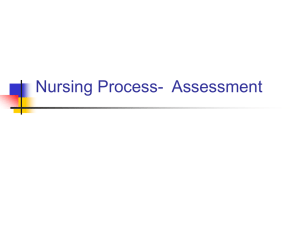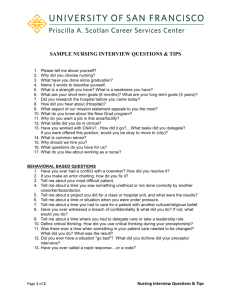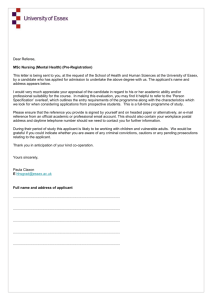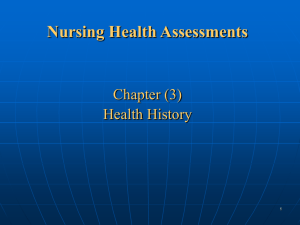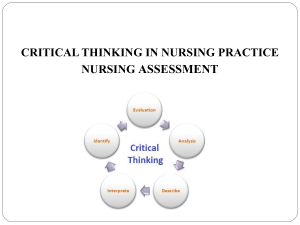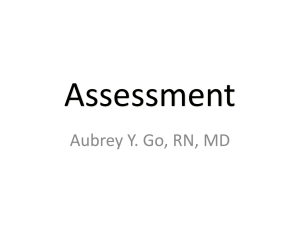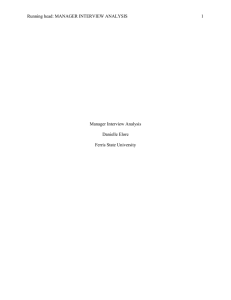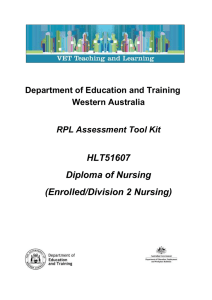Communication - Oakton Community College
advertisement
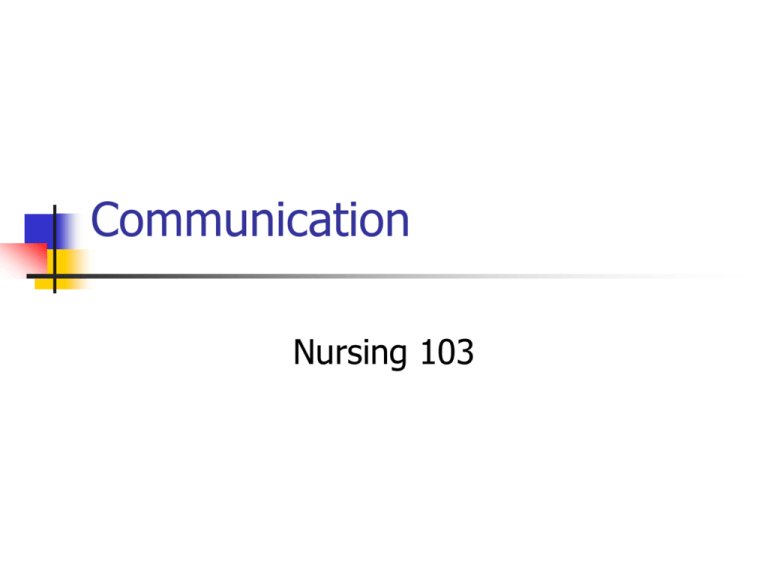
Communication Nursing 103 Factors Influencing the Communication Process Development Values and Perceptions Roles and Relationships Environment Congruence Interpersonal Attitudes Gender Personal Space Territoriality Barriers to Communication Stereotyping Agreeing and Disagreeing Being defensive Challenging Probing Testing Rejecting Changing topics and subjects Unwarranted reassurance Passing judgment Giving common advice Communication With Children Infants: Communicate through senses. Touch is important Toddlers and Preschoolers: Give them time to respond. Picture drawing used to communicate School-Age Children: Talk at eye level. Include child in conversation Adolescents: Build rapport. Active listening, nonjudgemental, nonreactive. Communication with the Elderly Physical or Cognitive problems Sensory deficits Cognitive impairment;dementi a Neurological deficits R/T stroke-paralysis or aphasia Obtain appropriate resources to improve interaction and socialization Simple, face to face conversations Include family/friends Use reminiscing to maintain memory and self identity. Communication and the Nursing Process Assessing: Determine communication barriers or problems Diagnosing: Determining the nursing diagnosis R/T the etiology of the communication impairment. Planning: Nurse and client plan desired outcomes to resolve factors impairing communication Communication and the Nursing Process Planning: Plans ways to promote more effective communication Implementing: Nursing interventions to assist client with achieving more effective communication. Communication and the Nursing Process Evaluating: Listen attentively, observe nonverbal cues, use therapeutic communication to determine if the client is effectively communicating. Process Recording Interviewing Directive Interview Nondirective Interview Rapport Types of Questions Closed Questions Open-ended Questions The Interview and the Setting Time: Comfortable, convenient, pain free Place: Free of distraction and interruptions Seating: 45 degree angle in bed Distance: 1-3 feet; Men require more space than women; anxiety increases need for space. Language: Translate medical terminology Stages of the Interview The Opening: Most important part Establishing Rapport: Create goodwill and trust Orientation: Explains the purpose of the interview The Body: Client expresses what he or she thinks to questions from the nurse. The Closing: Nurse terminates when information is collected. Or, client terminates. Review Belief that others can help and will help Open and authentic,spontaneous, nondefensive. Concerned with helping others Assures client of getting quality care Put yourself in another’s position;communicate that you understand the client’s reality and feelings Willingly receives the client’s honest feelings and actions without judgment.





